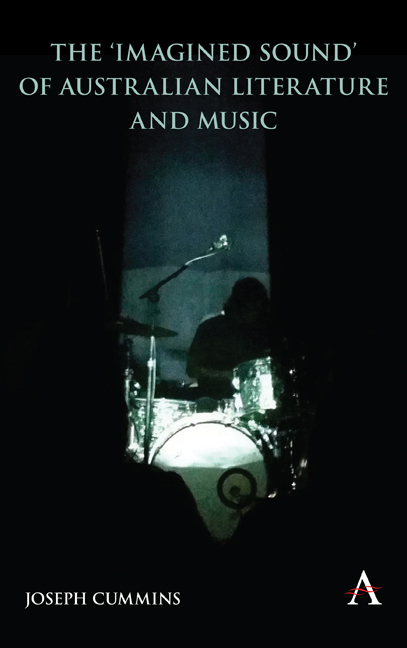Book contents
- Frontmatter
- Contents
- Foreword
- Acknowledgements
- Introduction: Imagined Sound
- Part One Listening to the Continent
- 1 Reimagining ‘The Centre’: Francis Webb's ‘Eyre All Alone’ and David Lumsdaine's Aria for Edward John Eyre
- 2 Midnight Oil: Sounding Australian Rock Around the Bicentenary
- 3 Sound and Silence: Listening and Relation in the Novels of Alex Miller
- Part Two Listening to Islands and Archipelagos
- Part Three Listening to the Continental Archipelago
- Coda
- Notes
- Works Cited
- Index
1 - Reimagining ‘The Centre’: Francis Webb's ‘Eyre All Alone’ and David Lumsdaine's Aria for Edward John Eyre
from Part One - Listening to the Continent
Published online by Cambridge University Press: 18 September 2019
- Frontmatter
- Contents
- Foreword
- Acknowledgements
- Introduction: Imagined Sound
- Part One Listening to the Continent
- 1 Reimagining ‘The Centre’: Francis Webb's ‘Eyre All Alone’ and David Lumsdaine's Aria for Edward John Eyre
- 2 Midnight Oil: Sounding Australian Rock Around the Bicentenary
- 3 Sound and Silence: Listening and Relation in the Novels of Alex Miller
- Part Two Listening to Islands and Archipelagos
- Part Three Listening to the Continental Archipelago
- Coda
- Notes
- Works Cited
- Index
Summary
For Francis Webb and David Lumsdaine, along with many other visual artists, writers and composers, the years after World War II were an intense period of engagement in the mythopoeic practice of ‘seeking the centre’ (Haynes 1998). Presenting the explorer's journey in search of the mythical inland sea, Webb, Lumsdaine and their cohort helped to define, but also problematize, the non-Indigenous relationship to Australian space in the post-war period. Moving away from the bush – the geoimaginary validated by earlier generations attempting to define the space of the nation – the centre was a tabula rasa, capable of supporting both the search for an Australian spatiality and contemporary Modernist concerns with interiority, both spiritual and continental.
Although Webb's ‘Eyre All Alone’ (1961) and Lumsdaine's Aria for Edward John Eyre (1972) are clear evocations of the Modernist monad – the titles of both works indicate shadings of Romantic heroic individualism – Webb and Lumsdaine follow the facticity of the historical events in not allowing Edward John Eyre (1815– 1901) to locate a geographic centre or the mythical inland sea. In Webb's poetic series and Lumsdaine's composition the failed moment of transcendence central to modernism is doubled, resonating with the explorer's failure to locate the fabled centre. Despite being based on the same figure and journey, Webb and Lumsdaine's representations of the search for the centre are singular, a reflection of the originality of their wider artistic missions. At the same time the supposed ‘blankness’ of the Australian desert, an important aspect of the relevance and appeal of the desert as a mythopoeic spatiality for those working in the post-war period, masks the erasure of Indigenous people.
Webb's ‘Eyre All Alone’, built from a refrain of transcendence at the seaside, replaces the centre, moving it to the continental border. Intensifying focus on interiority and paranoia while immobilizing forward momentum, Lumsdaine's Aria fragments the centre, creating a fissure within the figure of Eyre. Webb aligns the site where Eyre came closest to the geographic centre with the structural centre of his poetic sequence. This narrative re-ordering is also a feature of Aria, serving to emphasize the transcendence or horror of the centre, rather than its centrality.
- Type
- Chapter
- Information
- The 'Imagined Sound' of Australian Literature and Music , pp. 17 - 44Publisher: Anthem PressPrint publication year: 2019



